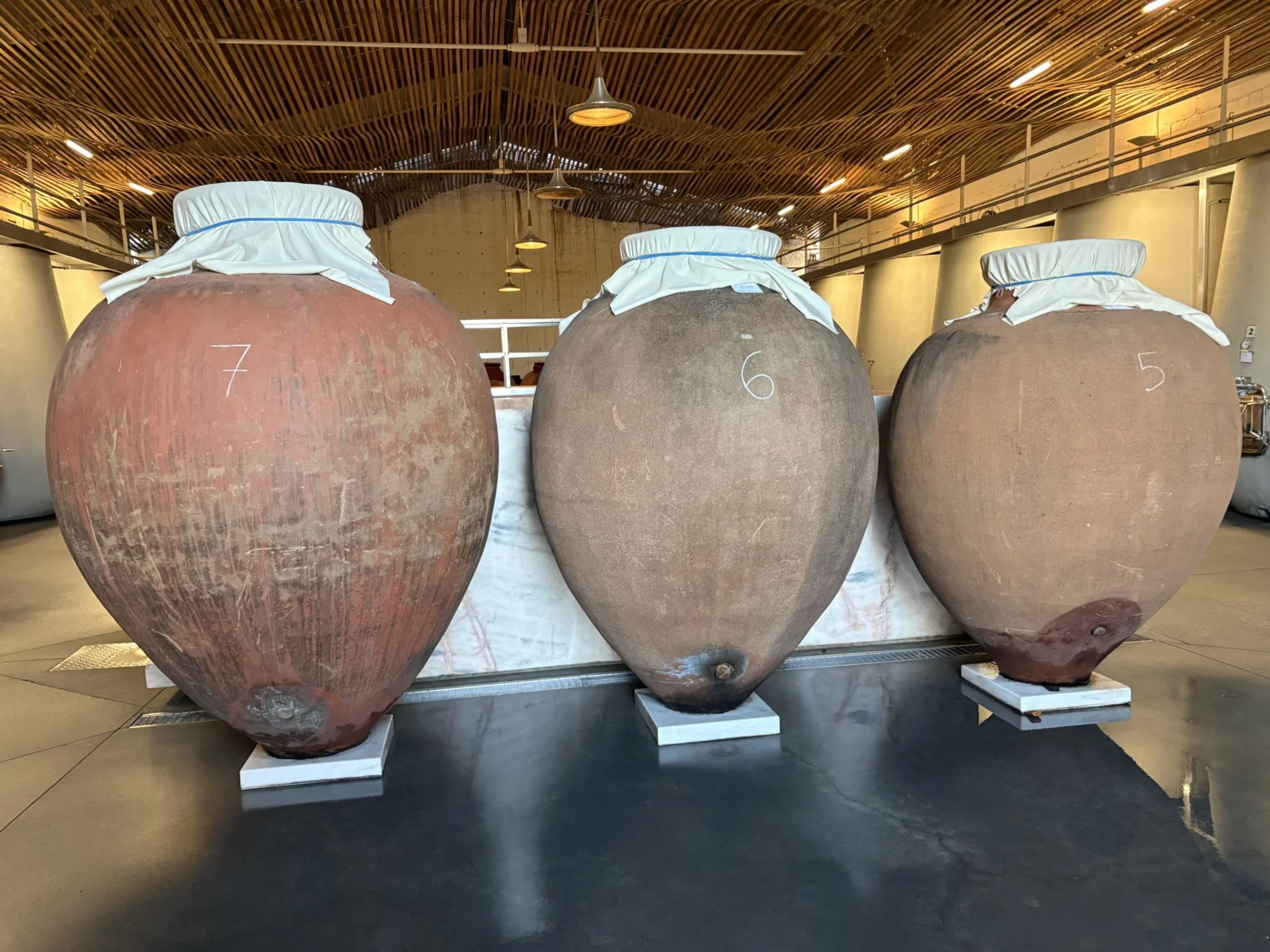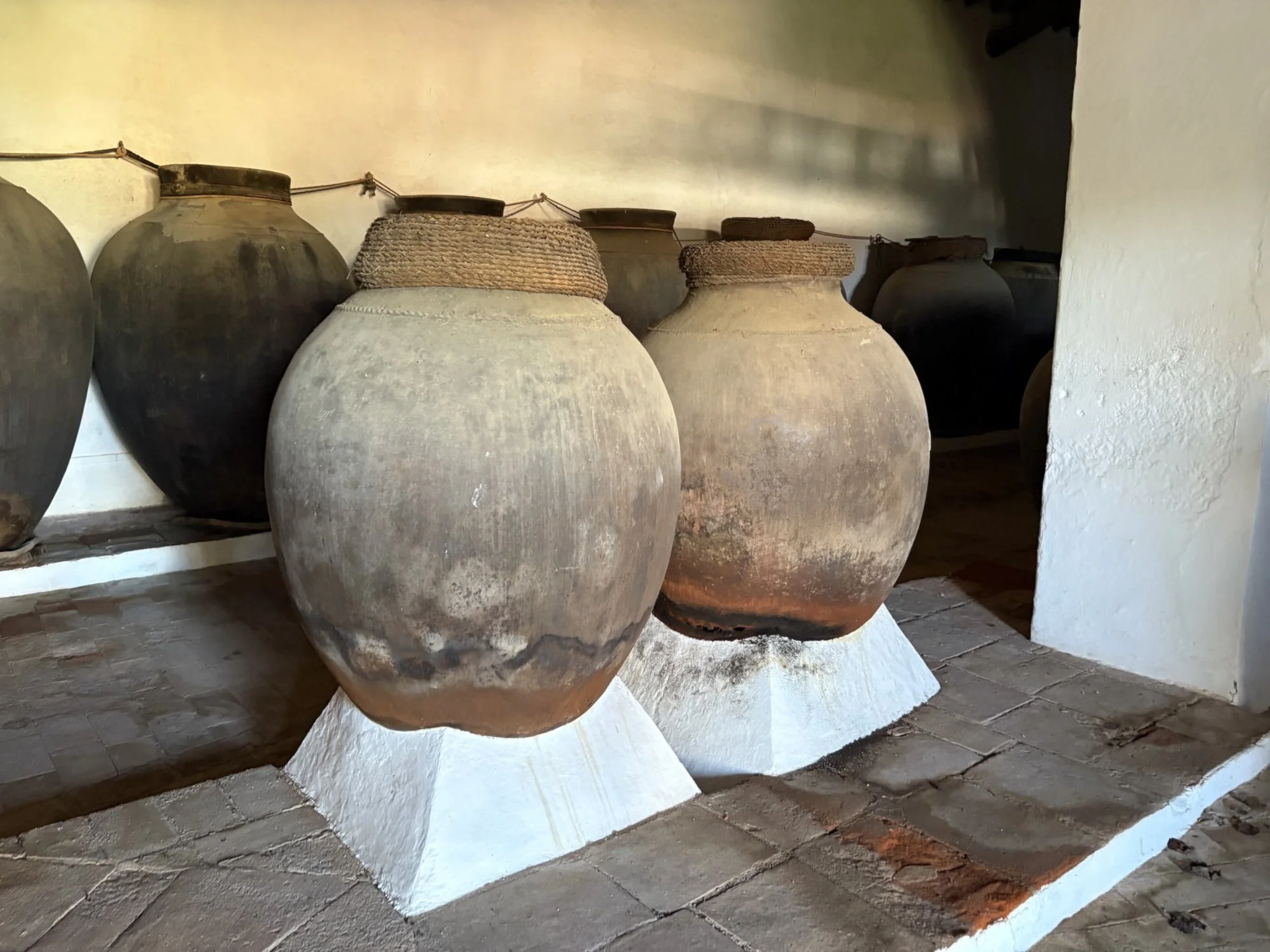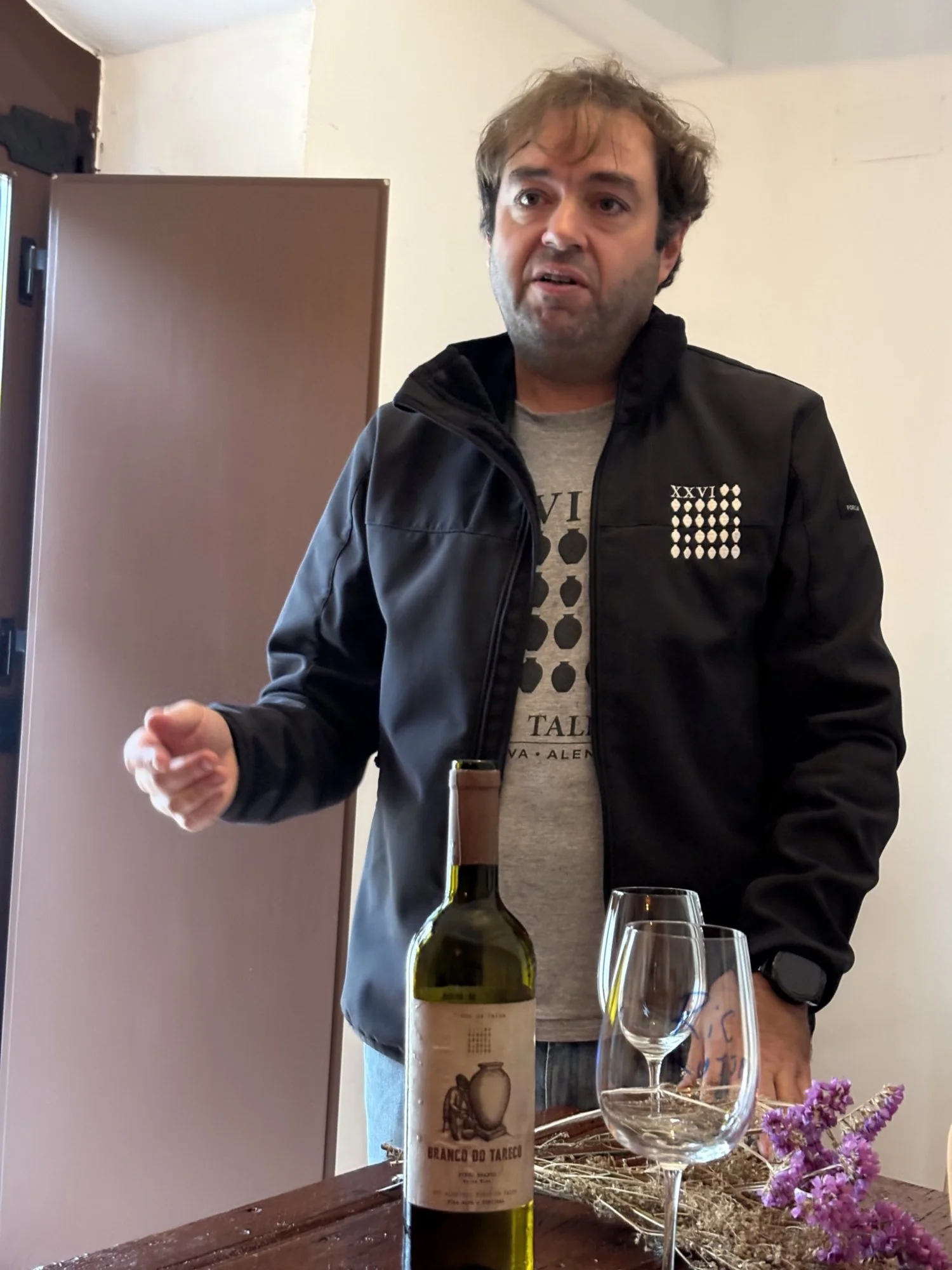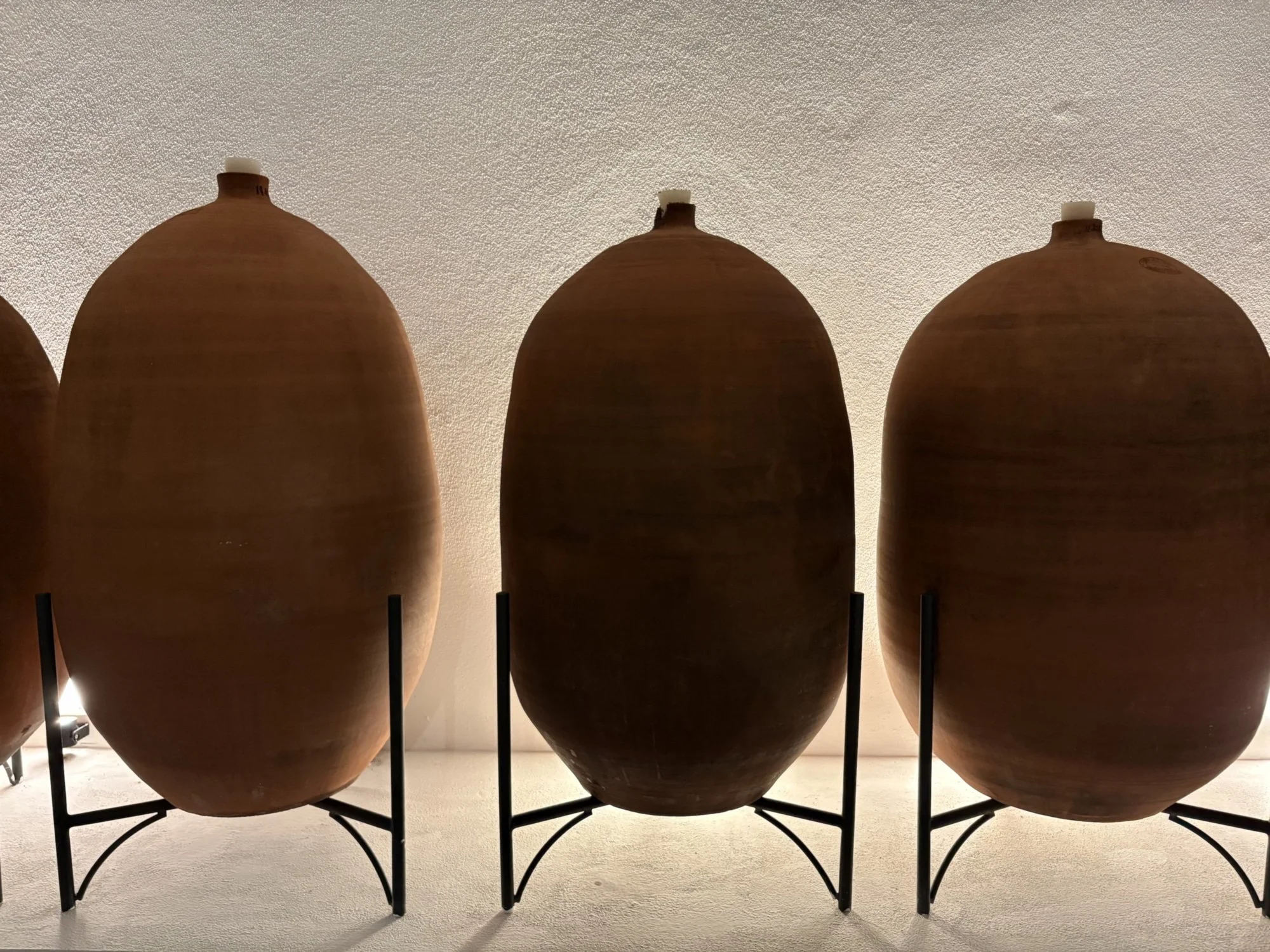Making Wine in Amphora (Clay Jars) in Portugal
Talhas at Esporão
The use of amphora, large clay jars, to make wine can be dated back to at least 6000 BC in ancient Georgia, and the practice was common throughout the ancient Roman Empire. Today, winemakers are reviving this technique and using old world methods to make new world wines. Nowhere was this more evident than at the Herdade de Rocim in Alentejo, Portugal where I attended the Amphora Day Festival on November 16. Alentejo has hosted the festival in recent years because it is the single place in the world where the use of amphora, there called talha (pronounced tal-ya), has seen the greatest resurgence. In Portugal, the making of wine and not just the aging is in talhas.
How Wine is Made in Amphora
Dona Maria Wines talhas
Making wine with amphora is elegant and fairly straightforward. Large clay jars, some capable of holding more than 300 gallons of liquid, are covered on the inside with a resin made of pine and beeswax. Then, winemakers fill them with crushed grapes. The grapes have been destemmed, but the skins are left on, even with the white wines. There the wine sits, typically for about 6 months and ferments on natural yeast. Fermentation and aging complete, a spicket is stuck into the bottom of the jar and gravity does the rest. The skins provide a natural filter, allowing clear wine to pour out of the rustic container.
Ricardo Santos, winemaker at XXVI Talhas
The use of amphora has a distinctive impact on the wine. As Ricardo Santos, Head Winemaker at XXVI Talhas in Alentejo explains, “fermenting the grapes in talha versus stainless steel, the talha have more micro oxidation, so the tannins will be more round earlier and the wine become easier to drink faster.” Similarly, using amphora instead of wood creates wine that naturally focuses on the fruit itself. Trying the wines at XXVI Talhas, I liked both the whites and the reds, but I was particularly struck by the Mestre Daniel Talha XV. This red wine is made with a traditional Portuguese grape, Tinta Grossa, and drawn from a single talha. It showcased beautiful raspberry and black cherry notes along with lovely, integrated tannins and medium acidity, closing with a soft, drying finish.
A Celebration of Amphora Wines
Amphora Wine Day Poster
At the Amphora Day Festival, winemakers from around the world shared bottles of wine made using amphora, including vintners from France, Georgia, Italy, Portugal, the U.S., South Africa, and more. There were far more than 100 different varieties presented, certainly too many for one person to try – though I did my best. Many winemakers chose to adhere to old-world techniques and poured wine that is likely similar to that made by the Romans who lived in the region two thousand years ago. Others innovated by altering the length of time the wine spent in amphora, aging the wine after disgorgement, and introducing wood-aging into the process. At least one winemaker even made a sparkling wine that underwent secondary fermentation in the bottle after primary fermentation took place in the amphora.
Talhas Herdade da Aldeia de Cima
While some vintners make their wine entirely in amphora, others employ it as just one element of winemaking. For instance, in the Colli Tortonesi region of Piedmont, Italy, the grape Timorasso is sometimes fermented using amphora to add extra depth to the white wine by leaving it in contact with the skins. The wine is then aged further in stainless steel and/or wood casks. When making the Fontanafredda Derthona Timorasso, oenologist Giorgio Lavagna uses amphora for just one part of the process because, he explains, “it gives greater complexity to the wine, greater integrity, amplifies the aromas and accompanies very gently the evolution of the wine thanks to the microporosity that terracotta possesses.” Trying the 2023 vintage, I enjoyed the Timorasso’s notes of juicy peach, melon, lemon citrus, and honey, and I was particularly struck by how well the individual notes managed both to stand out and also seamlessly integrate with the wine’s minerality, salinity, and high acidity. It is a sophisticated wine that reveals layers of flavor yet is simply delicious.
Alentejo's Amphora Heritage & DOC
Dona Maria Wines talhas
All wines that make use of amphora were welcome at the Amphora Wine Day festival, but there was particular pride among those that stuck to traditional practices. The festival’s location in Alentejo, Portugal explains why: it is the only place in the world that has a DOC designation for amphora, and to earn that label, the wine must follow strict rules that follow ancient practices. One important stipulation of a “Vinho de Talha DOC” is that the talha must be tapped on or around St. Martin’s Day, November 11. This has introduced a challenge in recent years as climate change has caused vintners to harvest earlier than they did previously. This means the wine stays in the talha, in contact with the skin, for longer than might be ideal. And yet, among the winemakers I met, there is pride in maintaining the practice of tapping the talha on St. Martin’s Day, despite the challenges it introduces. Ruben Honrado, managing director of Honrado Vineyards, said “Talha wine production is in my blood—it’s part of my family, my neighbors, and our shared heritage. Vila de Frades may be a small village in the heart of Alentejo, but it carries immense cultural significance through its deep connection to Vinho de Talha.”
Portugal and Beyond
Alentejo wine party
The whole week surrounding the holiday and the festival were opportunities for neighbors and visitors to celebrate the tapping of the talhas by trying this year’s new wines directly from the tap. After the talhas have been tapped, the parties begin. At the wineries and beyond, food is served and endless bottles of wine are shared, mostly from Alentejo but also from other parts of Portugal and around the world. At these parties, I had the chance to talk with Paul James White, author of Talha Tales: Portugal’s Ancient Answer to Amphora Wines. When he first started researching talha in 2010-11, he told me, the only winemakers he found that were seriously invested in the style were Jose de Sousa and a number of amateurs. When he published his book in 2022, there were 17 professional producers of talha wine. Today, there are 25 officially commercialized and DOC certified wineries, and the number jumps to more than 60 if we include wineries that use talha but fall outside of strict DOC rules. It seems clear that the ancient practice of making wine using amphora is thriving in Alentejo and drawing interest around the world.
Read more:







